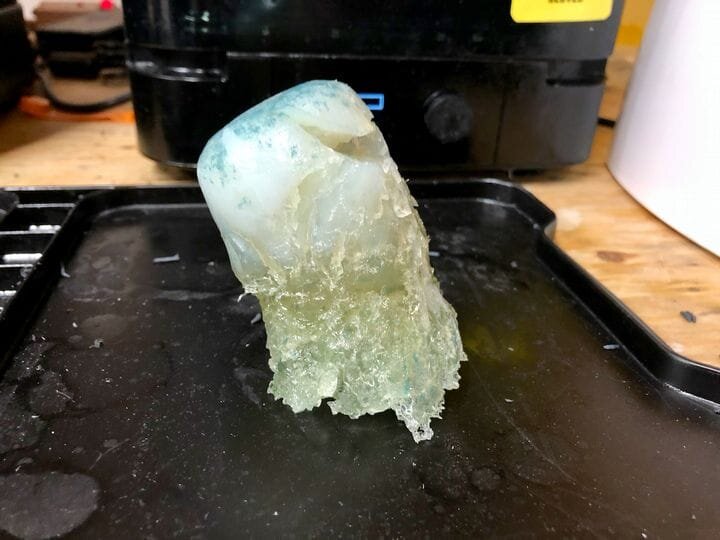![Object made from leftover resin in a dirty IPA cleaning solution [Source: Fabbaloo]](https://fabbaloo.com/wp-content/uploads/2020/05/image-asset_img_5eb08cd0b8ada.jpg)
This week’s question focuses on the increasingly important topic of safety when using resin 3D printers.
Reader Antoine asks:
“Would it be hazardous to work on my computer in the same room as my working Elegoo Mars with an open window to keep the room ventilated?
I checked the MSDS document of different brands (Peopoly, Elegoo, Anycubic, Photocentric3D and Formlabs). In none of these documents I saw the necessity of using an activated carbon mask under normal conditions. They mention the necessity to use specific respiratory protection in case of high temperature, condition of mist or emergency.
Would it be that foolish to continue to work in the same room as my working printer as long as I keep my windows open? Regarding the respiratory safety?
When I directly work on the print, the vat or the printer (opening the case, removing the print, cleaning the print, etc.) I use a respirator, nitrile gloves and special clothes.
But what about ‘during’ the print?”
Thanks for this important question, Antoine. My informal research suggests the use of photopolymer resins is far more dangerous than most 3D printer operators suggest.
3D Printing Toxins
The problem appears to be the gradual absorption of resin materials into the body, and this can apparently occur through various means, including inhalation. However, it seems that direct skin contact is the most dangerous.
From what I can gather, it seems that the body absorbs some material upon each exposure, and eventually the amount of toxin in the body is sufficient to raise a reaction, which can be sudden and severe. We were made aware of a recent case in which someone who had been regularly 3D printing with resin equipment accidentally sloshed some loose resin on his arm.
Soon after, the skin on his arm became immediately inflamed and major blisters formed. The 3D printer operator was taken to the hospital where third-degree burns were diagnosed, and skin grafts were eventually necessary for a full resolution. As this incident took place in the US, tens of thousands in medical bills were generated.
That’s the kind of reaction you want to avoid.
3D Printer Resin Absorption
The reaction, as I mentioned, occurs when the body accumulates a sufficient amount of the toxin. This could take place very quickly if massive exposure scenarios occur, or slowly over a longer period.
How does the toxin enter the body? Certainly inhalation of vapors emanating from exposed liquid resin could do so, but I am not sure of the rate at which this takes place. Nevertheless, even if it is a low rate, it simply means it would take longer to absorb the critical amounts. Breathing toxins is never a good idea, regardless of the amount.
The other path for toxin absorption is through the skin. While many resin 3D printer operators accidentally splash resin on their skin and see no immediate harm, that is actually allowing toxins to directly enter the body through pores.
An even worse scenario is the cleaning stage, where fresh resin 3D prints are washed in IPA, creating a solution of IPA + resin, which is more dangerous than either alone. At top is an image of a dirty IPA solution after being placed in a curing station. You see solid structures that are the cured resins that were in the IPA. The resins do not “go away” in IPA; they are still there.
The worst situation is putting this dirty IPA solution on your skin because the IPA tends to open up the pores of the skin, allowing much more toxic resin to enter the body rapidly.
But back to your question, “what to do”.
3D Printer Resin Safety
In the case of airborne resin, you really don’t want to breathe any of it, and thus I strongly recommend an active air venting system to blow the toxins outside as soon as possible. This could be aided by placing venting equipment near the 3D printer, of course. A passive setup with an open window is probably insufficient.
For skin protection it is mandatory that you use the personal protective equipment as you describe. Never, ever, touch the resin or objects with resin on them. And especially avoid the IPA cleaning solution.

